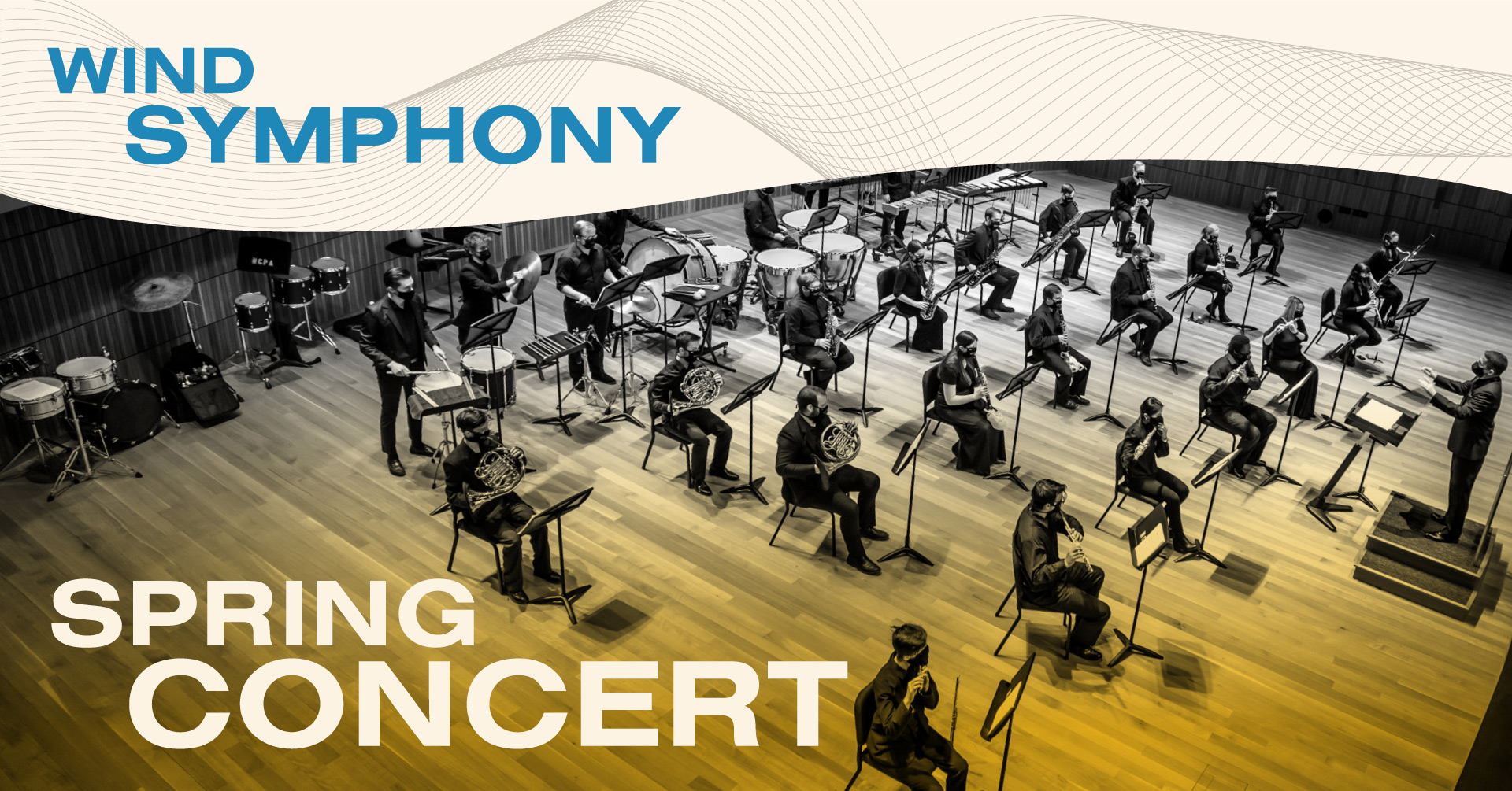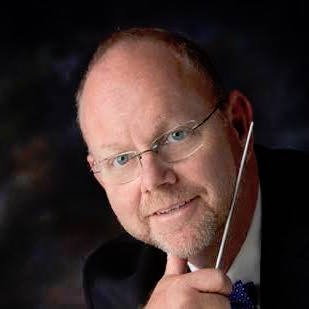

February 22, 2021 | 7:00 pm | Concert Hall at The Noorda
Reunion (2020)
Giovanni Santos
(b. 1980)
consortium premiere
Suite Argentine (2020)
James Syler
Chacarera
Milonga
Bombo
Malambo
(b. 1961)
consortium premiere
Donald Miller, conductor
Children’s March “Over the hills and far away” (1918/95)
Percy Grainger
(1797 – 1848)
Ed. R. Mark Rodgers
Symphony No. 2 (2019)
James Syler
Andante
Adagio
Passacaglia and Fugue
(b. 1961)
consortium premiere
Emily Humphrey
Henry Beal
Kendra Hamblin *
Litzy Ramirez Carbajal
Desmond Walker
Ivy Gines
Andrew Apgood *
Savannah West
Erin Bateman
Braxton Biggers
Bridger Bird
Connor Duersch (contra)
Jake Henseler
Kaitlin Holt *
Spencer Holt (bass)
Kylin Carlson (alto) *
McKabe Jolley (soprano)
David Kland (tenor)
Braydon Twede (bari)
Joshua Johnson
Nathan Martinson
Bradly Olson
Noah Sheen
Clayton Shepherd *
Rachel Colton
Kyle Sherman
Brendan Wiggins *
Adam Bean *
Cameron Bridston
Ruth McDougall
Charles Bartlet
Chris Desio *
Travis Burket
Asher Fairbank
Tracey Furr *
Alec Lowe
David Martinez
Cody McCown
Naomi Okamura
Alex Smith
Nathan Smith
* Section leader

Don Miller has music degrees from Southwestern Oklahoma State University, Wichita State University,
and received his Doctor of Musical Arts in Conducting from The University of Iowa.
His past experience includes working in public schools and universities in Oklahoma,
Kansas, Missouri, Texas and Colorado. In addition to his teaching positions, Dr. Miller
has been Conductor and Music Director of the Starlight Symphony Orchestra of Wimberley,
Texas, the San Antonio Symphonic Band, the West County (St. Louis) Youth Orchestra
and many other ensembles. He is currently Music Director and Conductor of Orchestra
Esperanza Park City, a Chamber Orchestra in Park City, Utah. In addition to his conducting
and teaching experience, Dr. Miller is author of Rehearsing the Band, Volume 2.
As an advocate of new music, Dr. Miller has been responsible for commissioning over
20 works from composers such as Timothy Mahr, Andrew Boysen, Barry Morse, James Syler
and others. He is also an advocate for music education and has served as a clinician
for schools and conductor of honor bands across the US. He has made presentations
at a number of professional conferences, including the College Band Directors National
Association (CBDNA), the Music Educators Associations of Texas, Arkansas, Kentucky,
Wyoming, and Missouri, as well as the California and Iowa Bandmasters Associations.
In addition to presentations, he has been an adjudicator for Director’s Choice Music
Festivals, Festivals of Music, and state and national events.
Reunion (2020)
Reunion is a fanfare inspired by the anticipated return to ensemble rehearsals and performances
following the global pandemic shutdown in the spring of 2020. Composer Giovanni Santos
gifted the music to And We Were Heard, a non-profit organization dedicated to producing
quality recordings of underrepresented composers. And We Were Heard also strives to
help conductors/teachers explore the importance of diverse programming.
The work itself starts in a very dark place, a place where students are not able to join
together to make music. This is a place of confusion, sadness, with a glimmer of hope
for the future. The work develops into a joyous celebration for the day we get to
perform music together again. Reunion is dedicated to all who lost their battle with Covid-19 and their families.
Suite Argentine (2020)
The South American country of Argentina was born from Spanish, Italian, French, and other
immigrants who started arriving in the coastal city of Buenos Aires in the mid-1500’s.
It is a rich and diverse musical culture that spans vernacular traditions to art music.
Most famous for the tango, I chose the following four folk musics for this symphonic
suite.
I. Chacarera is a type of folk dance that originates in northwest Argentina. The name
is derived from the Spanish word “chacra” meaning farm or ranch. This setting is partially
based on a recording of an old chacarera for guitar from the Smithsonian Folkways
Recordings.
II. Milonga is a precursor to the more popular tango and originates in the Rio de
la Plata region near Buenos Aires. Milonga reached its height of popularity in the
19th century. In this setting, I wrote a slow tempo milonga that implies the music
that would eventually become the tango.
III. Bombo is a traditional Argentine wooden drum with an animal skin head that is
the basic rhythm instrument for most Argentine folk music. Its sound is similar to
a muffled bass drum and features a drumming technique that alternates between striking
the drum head and the rim or shell. This movement is an extended solo featuring four
drummers playing traditional bombo patterns that accentuate its unique sound and drama.
IV. Malambo may be Argentina’s most exciting dance. It originated on the country ranches
where gauchos (cowboys) used to pantomime a fight. The music is a IV-V-I chord progression
in a repeating four-bar phrase used to accompany gaucho dancers performing intricate
foot dances. In this setting, I combined the opening chacarera melody with the traditional
malambo progression. The music harmonically modulates upward and culminates with the
full ensemble at full volume.
Suite Argentine was commissioned by a consortium of twenty high schools and colleges organized by
Dr. John Zarco, conductor.
Children’s March (1918/95)
Children’s March is the first composition of Grainger’s maturity originally composed and scored for wind band and, indeed, one of his few compositions that does not exist in any full-length version suitable for performances by symphony orchestra. In contrast to many of Grainger’s other compositions, the march was provided with no program notes. The score bears the dedication “For my playmate beyond the hills,” which is understood by many Grainger scholars to reference Karen Holton, who shared a lengthy relationship with him during the first decade of the twentieth century. With instrumental demands unlike any band work before its time and with matching technical challenges made to the entire performing ensemble, Percy Grainger’s Children’s March remains one of the most original and satisfying parts of the wind band essential repertoire.
Symphony No. 2 (2019)
The foundation of this music is an ascending three-note motive of C-Ab-B. This motive
is the basis for the primary 12-tone theme heard at the beginning. Because there is
no narrative, the structure of the work is held together by using three traditional
forms.
Movement I is a modified sonata form with a mood of foreboding. It may feel nervous,
alarming, comical at times, and militaristic. Movement II is an ABA form built on
an excerpt of the original theme from movement I. The zenith of the movement is a
quiet chorale. This movement may feel like it is traveling and looking back with nostalgia.
Movement III is a passacaglia and eight variations followed by a double fugue featuring
two simultaneous subjects. The themes of the previous two movements reappear as the
music develops into a dissonant texture that transitions to the opening bass ostinato.
As the brass build tension, the music pushes towards its new tonic of G major.
The composer was commissioned by a consortium of 15 universities organized by Dr.
Timothy Shade, Director of Bands, Wichita State University, Kansas.
Clarinet/Woodwind Coordinator
JEFFREY O’FLYNN
Horn/Brass Coordinator
MADDY TARANTELLI
Percussion Coordinator
SHANE JONES
Flute
REBECCA CHAPMAN
Oboe
LUCA FLORIN
Bassoon
LEON CHODOS
Saxophone
BLAKE WILKINS
Trumpet
RYAN NIELSEN
Trombone
CRAIG MOORE
Euphonium/Tuba
MIKE MCCAWLEY
Piano Coordinator
HILARY DEMSKE
Harp
JANET PETERSON